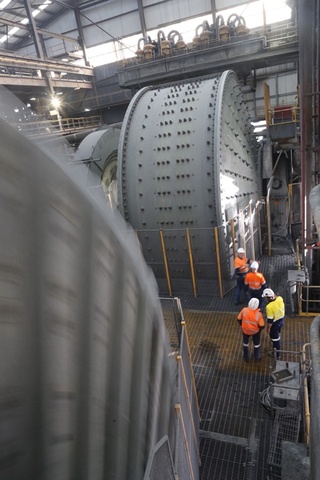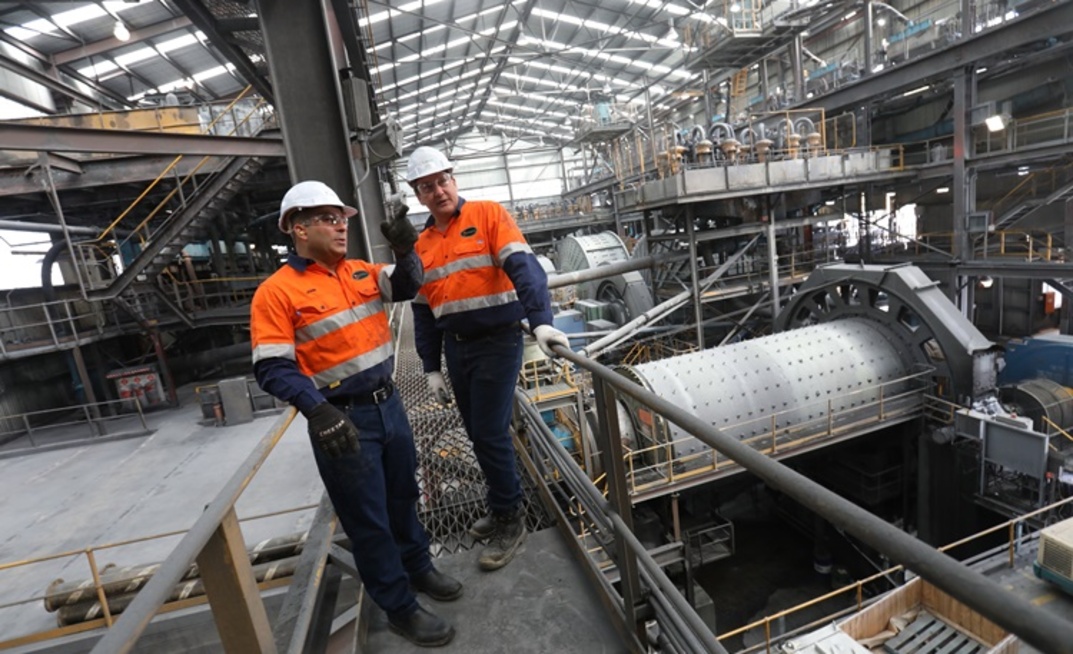Grange Resources owns and operates Australia’s largest integrated iron-ore mining and pellet production facility and is the country’s oldest magnetite producer. Located 100km southwest of Burnie in north western Tasmania, are the company’s Savage River mine and concentrator.
The concentrator at Savage River houses two Hardinge AG mills that were originally installed in the late 1960s. By 2005, maintenance personnel noticed cracks starting to appear in their shells and cones. The mills required ongoing repairs that resulted in plant downtime and there was always the risk of a catastrophic failure. With the mining operation expected to extend until at least 2034, Grange’s management team decided that in order to ensure concentrator reliability and to improve output efficiency, these mills would need to be upgraded.
“Our engineering team had done a great job of extending the mill’s 20-year design life to over 45 years. So while there is no doubt that the mill was at the end of its life, we mainly needed better reliability and efficiency,” notes Tim Dunbabin, Grange Resources’ senior project engineer.
Grange Resources’ engineering superintendent, Wayne Peck explains further: “Reliability of supply depends on the performance of our personnel and the processing equipment they use; remaining price competitive depends on keeping our costs in check. Energy is our biggest cost, and an area where even small changes can have a big impact.”
Grinding more with same power
In 2011, Grange Resources awarded Metso a EUR 5.7 million (US6.2 million) contract to engineer, supply, install, and commission the first of two planned new mills.
Dan Tonks, the project’s design engineer reviews the outcomes of the project: “Efficiency is a big benefit that has been gained from this project. The mill is now grinding more, using the same power.
“Equally as important for Grange are the safety benefits that the new mill has provided. In particular, both our staff and contractors have praised the new mill’s better overall access and larger work area. The guarding on the rotating elements is greatly improved and easier to handle. In my view, the project receives big ticks for safety, efficiency, and cost reduction.”
Talking about the success of the project, Steve Searle, Metso’s regional manager for mining services, says: “Metso didn’t just supply the components and technical expertise for the installation; we were an integral part of Grange’s engineering team. This approach makes such a big difference on a project like this. We worked through all of the issues together to ensure that the installation ran smoothly and on time.

“The installation process was developed with the Grange team, and we performed each operation as a unified team. The outcome is a new mill which, together with the new drive system, will give the plant 19% more capacity.”
How was it done?
The project scope involved increasing the production volume with a new rotating element that would accommodate a charge weight of 344t, but with the requirement to use the existing footprint and some of the components from the original 1966 mill, adding a lot of complexity to the design.
The original mill was based on a single-shell design, and although it had lasted more than 45 years, the new design had to be stronger to ensure trouble-free operation beyond the mine’s expected lifespan of 2034. So in the first instance, Metso’s new design replaced the single cone-shell with a two-piece structure that was 3.6m wide (distance from feed to discharge) and featured long-life Polymet rubber liners.
Peck explains why the company selected Metso for the job: “While we were familiar with Metso’s capabilities, for me the main decision lay in the overall package. Although other suppliers had the elements of good expertise or comprehensive equipment supply, when we looked at Metso we had the whole project covered. If we had an issue, we would only need to direct questions to one point of contact.
“Working so closely together on the project meant that Metso could assist us to look at the design of the project as a whole, and to not just consider the quickest or lowest cost solution, but to look at improving quality and throughput, reducing running costs, and overall long-term maintenance,” he adds.
























